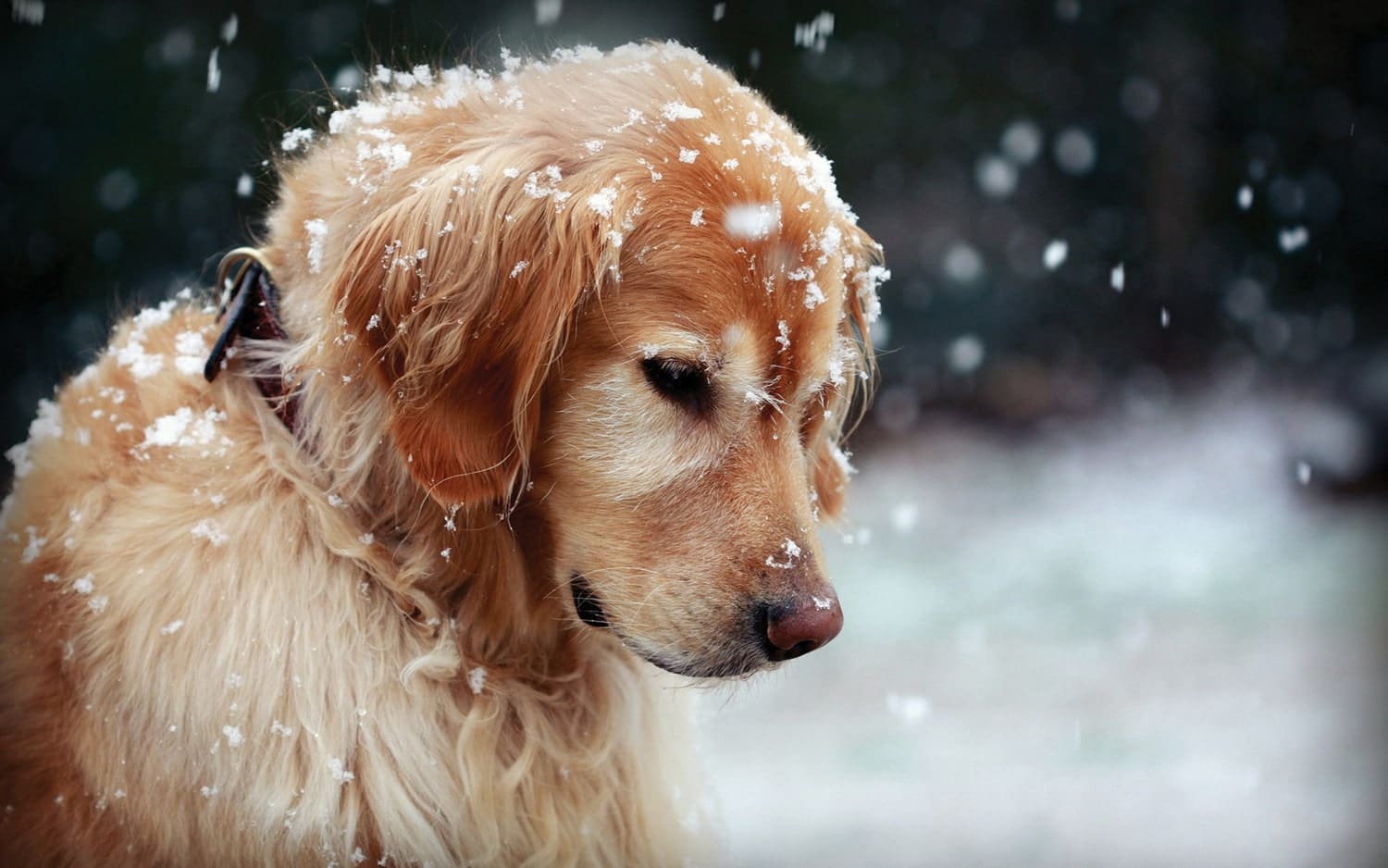The 6 deadliest dangers for your pet this Winter

Read on for the 6 deadliest outdoor dangers for pets this winter, and contact your veterinarian or nearest animal hospital if you suspect something is wrong with your dog or cat.
1. HypothermiaYour pet may have a built-in fur coat, but that doesn't mean they are any less prone to the severe effects of the cold. In fact, when the body temperature of a dog or cat drops below the normal range of 100-102.5°F (with an approximate +/- 0.5 degree differential), they begin to suffer from hypothermia. If left untreated, it may lead to coma, heart failure and death. Additionally, frostbite may occur as blood flow to the extremities (limbs, feet, ears, etc.) of animals suffering from hypothermia is restricted in order to preserve the vital organs (brain, heart, kidneys, liver and lungs). Watch out for the initial signs of hypothermia in dogs and cats such as paleness and intense shivering, especially if your pet is older or sick.
2. AntifreezeWhether it's from a spill while topping up your car's radiator or from a leak, antifreeze (coolant) is a danger to pets. Antifreeze, which is often sweet in taste and brightly coloured, contains an ingredient that can be fatal to dogs and cats if not treated immediately after consumption - ethylene glycol. According to the Pet Poison Helpline, there are three stages of antifreeze poisoning in dogs and cats:
1) Drooling, vomiting and signs of walking "drunk" occurs within 30 minutes to 12 hours.
2) Clinical signs seem to "resolve" despite severe internal injury occurs within 12-24 hours.
3) Acute kidney failure and possibly seizures or coma between 12-24 hours for cats and 36-72 hours for dogs.
3. Exhaust fumes
Many pets like to warm up in the winter by snuggling up to the car exhaust of an idling car or, for some cats, under the bonnet of the car. This poses several threats. Pets may be inadvertently run over by the car once it starts moving, or get tangled up in the engine's parts. Carbon monoxide poisoning is another hazard for pets if the car is left running with the garage door closed. Avoid tragedy by always checking under the hood and under the car when returning to a car running idle, and never leaving a car running in a closed garage.
4. Road / pavement de-icers (rock salt)Ice-melting salts not only irritate and chap your pet's paws, they can also poison your pet if consumed in sufficient quantities. According to the Pet Poison Helpline, "salt poisoning in dogs and cats results in clinical signs of vomiting, diarrhoea, lethargy, walking drunk, abnormal fluid accumulation within the body, excessive thirst or urination, potential injury to the kidneys, tremors, seizures, coma, and even death when untreated." When salting your own driveway and sidewalks, look for pet-safe ice melting products. Additionally, wash your pet's feet every time they come from outside, or consider buying them some cute winter booties.
5. RodenticidesPoisoning from rodenticides (mouse and rat poisons) is one of the most common types of toxicities managed by animal hospitals and veterinarians. These poisons are often used more during the winter, when rodents seek the warmth of our homes and office buildings.
Unfortunately, our pets tend to find them too. There are four common active ingredients in mouse and rat poisons: long acting anticoagulants, cholecalciferol, bromethalin, and phosphide rodenticides. All can be dangerous, even deadly, for dogs and cats depending on the quantity ingested.
6. FrostbiteYour pet may not be complaining about the cold, and is probably even having a blast playing in the snow, but just like us, animals do not always notice that their skin has started to feel funny. As the body’s temperature decreases in response to the outdoor temperature, blood is diverted to the core systems, leaving the outer organ, the skin, at risk of freezing. Once the skin has been frozen by the ice and snow, there is tissue damage, basically causing a condition akin to burning. At highest risk for frostbite are the footpads, nose, ear tips and tail.
Upon returning home after being outdoors for an extended time, or when the temperatures are especially low, check your pet’s risk points (along with the rest of the body). Early symptoms of frostbite include pale, hard skin that remains very cold even after being inside. As the skin warms, it may swell and change to a red colour.
Your pet may try to relieve the irritation by licking and chewing on the skin, in which case you will need to have the skin treated and covered immediately before permanent damage is done.
Never apply direct heat to the skin, water or otherwise. Only tepid to warm water should be used on the skin, and non-electric blankets to cover the animal. You may need to consult with a vet to make sure that the condition is not severe.
In some cases of severe frostbite the tissue needs to be removed, or the limb removed before the dead tissue allows infection to set in.
Conclusion
Hopefully, this has educated you and not frightened you. These are just some of the ways you can protect your pet, so that you do not need to worry yourself over anything, and so that you and your pet can have a great time in the snow and on the ice.
(Article source: Pet MD)




